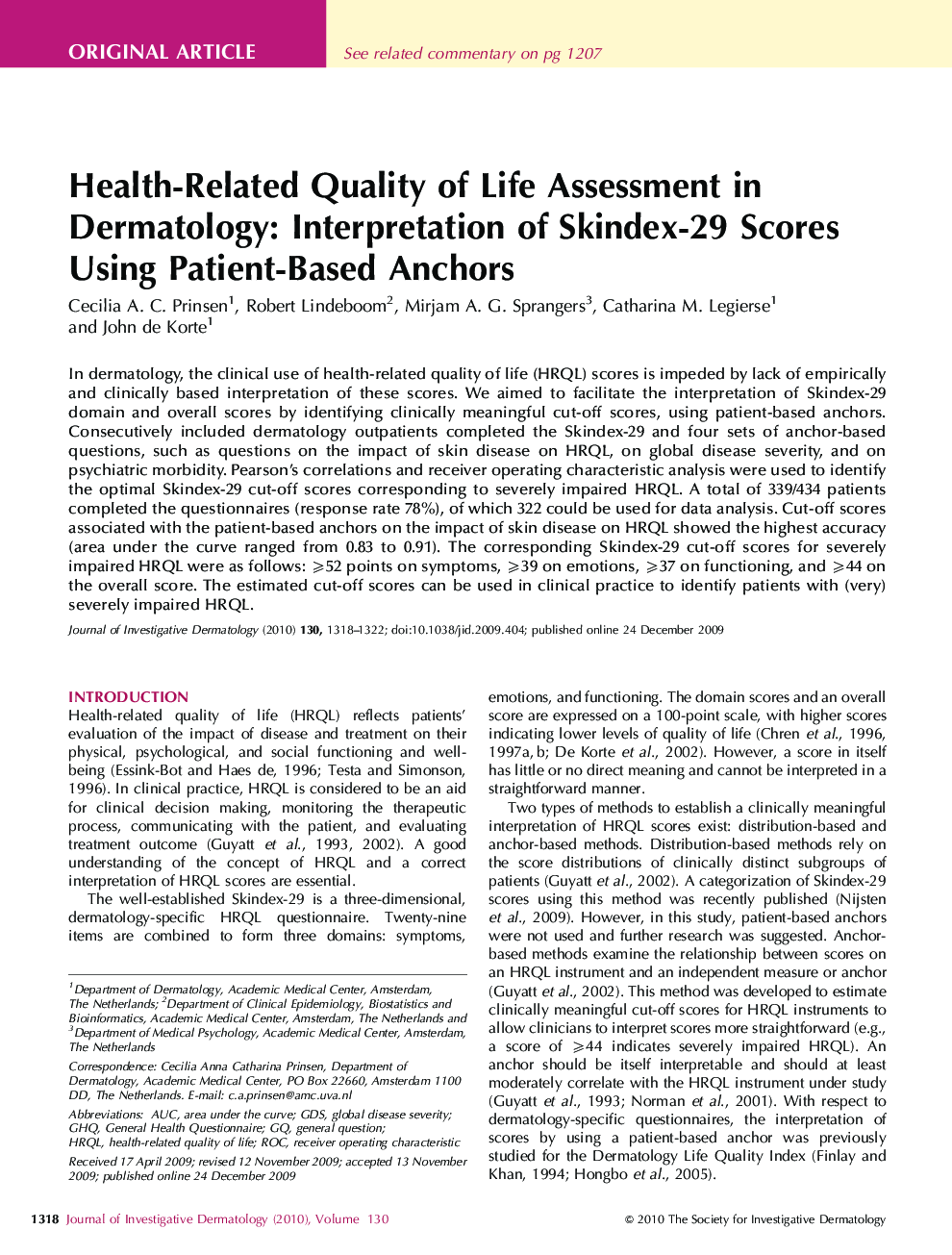| کد مقاله | کد نشریه | سال انتشار | مقاله انگلیسی | نسخه تمام متن |
|---|---|---|---|---|
| 3217095 | 1203592 | 2010 | 5 صفحه PDF | دانلود رایگان |

In dermatology, the clinical use of health-related quality of life (HRQL) scores is impeded by lack of empirically and clinically based interpretation of these scores. We aimed to facilitate the interpretation of Skindex-29 domain and overall scores by identifying clinically meaningful cut-off scores, using patient-based anchors. Consecutively included dermatology outpatients completed the Skindex-29 and four sets of anchor-based questions, such as questions on the impact of skin disease on HRQL, on global disease severity, and on psychiatric morbidity. Pearson's correlations and receiver operating characteristic analysis were used to identify the optimal Skindex-29 cut-off scores corresponding to severely impaired HRQL. A total of 339/434 patients completed the questionnaires (response rate 78%), of which 322 could be used for data analysis. Cut-off scores associated with the patient-based anchors on the impact of skin disease on HRQL showed the highest accuracy (area under the curve ranged from 0.83 to 0.91). The corresponding Skindex-29 cut-off scores for severely impaired HRQL were as follows: ≥52 points on symptoms, ≥39 on emotions, ≥37 on functioning, and ≥44 on the overall score. The estimated cut-off scores can be used in clinical practice to identify patients with (very) severely impaired HRQL.
Journal: Journal of Investigative Dermatology - Volume 130, Issue 5, May 2010, Pages 1318–1322